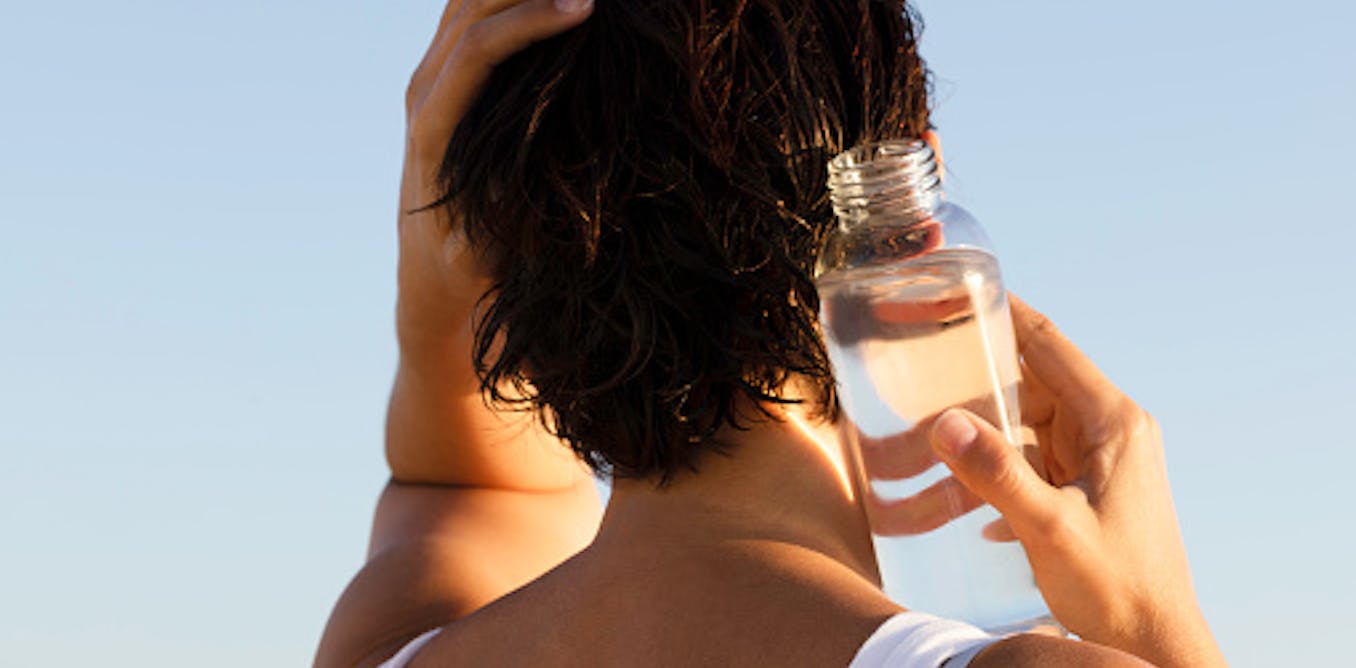

Dehydration is a big issue during unusually hot weather and outbreaks of diseases such as cholera that lead to life-threatening diarrhoea. Anastasia Ugwuanyi is a family physician and clinical educator at the University of the Witwatersrand. We asked her four questions designed to be useful in avoiding or managing dehydration.
What causes dehydration?
Dehydration can be defined as loss of intracellular body water. To understand the causes it’s important to set out some basic information about our bodies in relation to water physiology. Water contributes 55% to 65% of total body mass. Most of this is in lean tissue. The other third is extracellular.
Dehydration can be either water loss or salt and water loss. The body’s “water ecosystem” is regulated by responses to salt and water levels. Organs such as the brain, skin, gastrointestinal tract and kidneys are involved in water regulation.
Water in the body ecosystem is useful to maintain certain functions. These include:
- transporting nutrient, biological and chemical materials around
- part of the support system in joints, including the spine
- an environment for the normal chemical processes of the body to function.
Dehydration can be caused by several factors that tilt the regulatory mechanisms to a water loss mode. These can include:
- environmental or external causes such as heat waves (climate change factors)
- droughts and long-standing water deprivation
- reduced fluid intake – in elderly people, children or people with certain mental health challenges
- municipal shortages affecting availability or access to potable drinking water
- increased fluid loss through urinating excessively such as in conditions like diabetes
- increased loss of fluids from diarrhoea
- increased loss of fluids from sweating or hyperventilating.
How do you know if you’re dehydrated?
Shifts of between 5% and 10% loss of body water are symptomatic especially among very old and very young people. Signs to look out for include: headaches, fatigue or lassitude, confusion that cannot be immediately explained, a dry mouth (not immediately explainable), skin that’s dry when you pinch it and sluggish in the normal elastic return, sunken eyes and in infants sunken fontanelles, no tears when crying particularly in children, concentrated urine – deep amber to dark, and decreased frequency of urination as the body switches to conservation.
Other signs to watch out for include heat exhaustion symptoms. These indicate that the cardiovascular system is taking a hit. Here the signs can include: cold, clammy skin; unusually heavy sweating; weak, fast pulse; dizziness; muscle cramps; nausea.
What happens to your body when you’re dehydrated?
Several of our body’s systems are affected by dehydration. Effects of dehydration depend on the amount of loss, and for how long one has been dehydrated.
What happens is also a function of the level of dehydration. Dehydration is classified from mild to severe depending on the percentage body weight of water lost. In children and infants it’s particularly problematic because water makes up a bigger part of their body mass.
With a significant loss, symptoms include a drop in blood pressure that affects circulation dynamics and signs of decompensation – systems not being able to cope (think of an overheating car engine).
The cardiovascular system, gastro-intestinal system, renal system, central nervous system, skin and outer layer of your body, musculoskeletal system, are all adversely affected by dehydration depending on the level of total body water lost.
The effects of dehydration on the body can include: weight loss, constipation, delirium, renal failure, greater propensity for respiratory infections and urinary infections, hearts attacks and seizures as a result of blood thickening
These effects are all more debilitating in very old people and those with existing conditions like diabetes.
How can you stop dehydration?
To stop dehydration, it is important to consider every aspect of water demand and supply.
Environmental: Access to potable water supply always is a collective responsibility of government and the community. This can range from reporting and repairing municipality water supply leaks and breaks, to maintaining the water purification and supply distribution networks.
Personal: Don’t wait until you are thirsty before you drink. Thirst is your body saying you are becoming dehydrated. For every kilogram of body weight, drink about 30-35 millilitres (3 tablespoons) of water daily, especially in hot weather.
Be mindful of the signs of dehydration in yourself, or in the elderly, children, or incapacitated family or friends. Check that with simple steps such as replacement therapies made up of water, salt and sugar.
Be deliberate about drinking more water during physical activity, and when ill. Every home has salt, sugar and water. Knowing how to make this or having the prepackaged oral rehydration therapy at home is essential. There are a number of good guides to making homemade salt-sugar-water solution for treating dehydration before seeking medical help.
Create a habit of drinking water intentionally as opposed to cold drinks and beers that have water but are high in calories. These worsen dehydration.
Make sure you have extra fluids before, during and after exercise to maintain the right balance of water and salts during exercise.
Keep cool in hot weather by wearing breathable clothes, taking a swim or cooling showers if there are no water restrictions. Water jets are available in some public places to help with cooling during particularly hot weather.
Lastly, there are several smart devices with health apps that can assist with tracking water intake.![]()
![]()
Anastasia Ugwuanyi, Senior clinical educator, department of family medicine, University of the Witwatersrand
This article is republished from The Conversation under a Creative Commons license.

